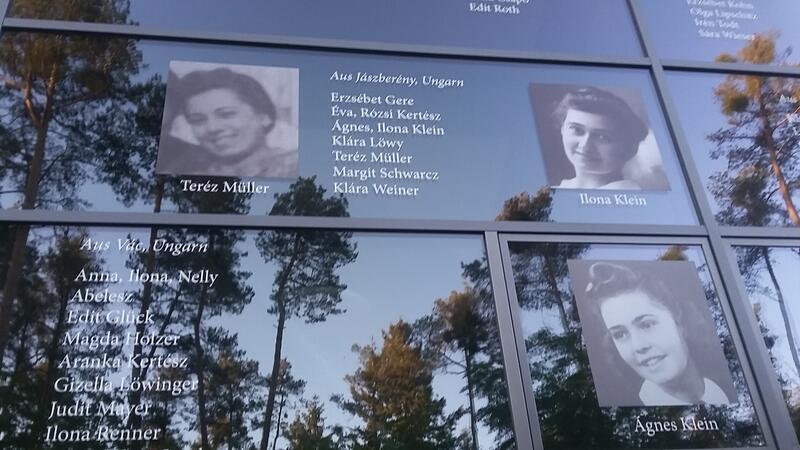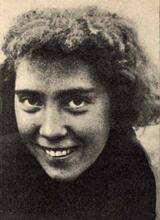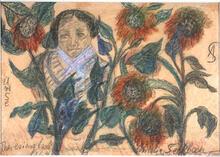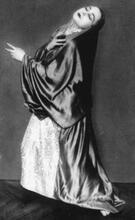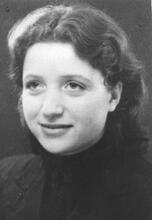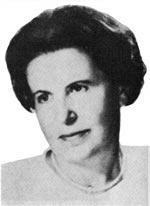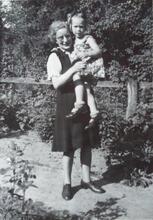Walldorf Camp: Hungarian Jewish Women (August-November 1944)
The Walldorf Camp in Frankfurt, Germany, was one of the hundreds of small labor camps that existed during World War II. Hungarian Jewish women slave laborers worked there, constructing the runway of the Frankfurt airport. They were among the 437,000 Hungarian Jews deported to Auschwitz between May 15 and July 9, 1944. After the war, the camp sank into oblivion until 1972, when three local schoolboys discovered it after a school trip to Buchenwald. Following the discovery, the local community became involved, creating a stone memorial, a four-week event, “Meetings with Hungary,” and building a memorial in the shape of an open-air museum.
Apart from the large, well-known concentration camps, hundreds of small labor camps existed during the Second World War, among them the Walldorf Camp at the Frankfurt airport in Germany.
The Discovery of the Camp
Because no readily visible traces of the camp remained after the war, it sank into oblivion until three local schoolboys, Alfred J. Arndt, Herbert J. Oswald, and Gerd Schulmayer, discovered it in 1972 following a school trip to Buchenwald, where they found the name of their hometown on a large map.
Through diligent research, they discovered that from August to November 1944, a large labor camp had existed in the forest at Walldorf on the site of the present industrial area adjacent to the airport and Cargo City Süd. Hungarian Jewish women slave laborers had worked there, constructing the runway of the Frankfurt airport. They had been among the 437,000 Hungarian Jews deported to Auschwitz between May 15 and July 9, 1944. On August 19–20, 1700 women aged between fourteen and forty-five were selected and taken to Frankfurt to build the first concrete runway for the Messerschmidt 262 jet plane. Walldorf served as a satellite camp to the Natzweiler-Struthof concentration camp in Alsace. The camp commander was SS-Sturmscharführer Reinhold Loehs, who oversaw two armed SS-Unterführer, twenty-seven guards and four SS women supervisors, one of whom was the notorious and merciless “Hertha.” In addition to six accommodation barracks were one barrack for washing and one (with a cellar) that served as a kitchen. The entire area was surrounded by a barbed wire fence.
Life at Walldorf Camp
The camp inmates worked for the Züblin company from 7 a.m. to 6 p.m. and sometimes even longer, unloading freight trains, leveling the ground; laying rail tracks, cables, and water pipes; tearing roots out of the frozen ground, and camouflaging—all without proper tools or warm clothing. They were not allowed to take shelter during bombing attacks.
Roll calls were held every morning and evening, before and after work. Food was inadequate and of extremely poor quality; infections, lice and extreme cold led to further deterioration of the inmates’ physical capacities. Minor disciplinary infractions incurred severe beatings administered in the kitchen cellar, which was unearthed on July 18, 1998, with the help of Cornelia Rühlig, the director of the local history museum.
Although the camp was located outside the town, many locals who worked at the airport must have seen the prisoners, but only a few of them occasionally sent their children to bring the women food or warm clothing.
On October 13, 1944, thirty-four sick women were sent back to Auschwitz, but there is no record of their arrival, nor were they ever seen again. On October 31, shortly before the first snowfall of the year, the camp commander reported seventy sick. On November 24, the camp was dissolved and the helpless women deported to the Ravensbrück concentration camp. Research indicates that only some 330 of the original seventeen hundred survived the war. Of these, approximately seventy-seven were still alive in 2019.
Community Involvement
The discovery of the camp in 1972 led to a series of actions by the local community. In 1980, a stone memorial was erected at the site of the camp entrance. In 1996, a four-week event, “Meetings with Hungary,” organized by the municipality of Mörfelden-Walldorf, included an exhibition on the camp. The central figure of the exhibit was Margit Racz, number 1000 on the camp list, who lived in Frankfurt, where she died on May 29, 2001. The first of the then sixty-five survivors to be found by the exhibition’s organizers, Racz was interviewed by Cornelia Rühlig and Klara Strompf, a Hungarian who had moved to Frankfurt in 1985 and learned of the camp’s existence from Racz’s son, Gabor Goldman.
The exhibition provided an overall picture of the camp. The names of all the inmates were inscribed on the walls. Individual photographs and stories gave life to some of the names. Many of the town’s residents, pupils and staff of the local school, members of the municipal council, and the Frankfurt Airport Authority contributed to preparing the exhibition. The twelve classes of the local school were so powerfully affected by what they saw that they decided to organize an end-of-year excursion to Hungary in order to continue investigating and studying the camp’s history.
Since the list of the camp inmates included eleven women from the Hungarian town of Pàpa, the municipality of Mörfelden-Walldorf contacted the mayor and Jewish community of the town, where the pupils met another survivor, Ibolya Jakab. They also planted an almond tree in the Jewish cemetery with the inscription: “In memory of all the women of Pàpa who suffered in the Walldorf camp in 1944.” A group of parents was so impressed by their children’s response that they raised DM 1,000 for the renovation of the synagogue in Pàpa.
Remembering Walldorf
Opening ceremony of the Margit Horvath Center at KZ Walldorf, September 25, 2016.
The pupils themselves devoted their time and energies to building a memorial in the shape of an open-air museum, which was officially opened at the camp site on November 15, 2000, in the presence of twenty survivors. They also initiated a demand that the Züblin Construction Company compensate the survivors. They were supported by their teachers, Rühlig, the press, and the municipal council. Züblin, now part of Walter Bau AG, signed the compensation agreement on April 17, 2000.
On July 14, 2004, Margit Racz’s son Gabor Goldman and the mayor of Mörfelden-Walldorf signed a contract establishing the Margit Horvath Foundation, supported by the compensation Goldman received after the death of his mother. Goldman wished the Foundation to support young people in social engagement, mutual tolerance, and intercultural communication.
After the excavations by student participants in several international work and study summer camp programs between 2005 and 2016, the underground cellar of the earlier KZ kitchen barracks was finally uncovered. As a memorial and a location for young people to engage with history, a spectacular glass building – designed by noted architect Heinrich Wagner – opened on September 24, 2016, in the middle of the Walldorf Forest; the ceremony was attended by sons, daughters and grandchildren of the survivors.
Braham, Randolph L. The Politics of Genocide: The Holocaust in Hungary (2016).
Braham, Randolph L and Elie Wiesel. The Geographical Encyclopedia of The Holocaust in Hungary. (2013)
Margit-Horvath Foundation. http://www.margit-horvath.de.
Rühlig, Cornelia. “Das Geheimnis der Erlösung heißt Erinnerung." Municipality of Mörfelden-Walldorf (3rd edition) (2017).
Rühlig, Cornelia. “Remembrance is the Secret of Redemption.” Municipality of Mörfelden-Walldorf (2007)
Strompf, Klara. KZ Aussenlager Walldorf: Jüdische Frauen aus Ungarn am Flughafen Frankfurt/Main 1944. 2nd edition (2009).
Vagi, Zoltan, Laszlo Csősz, and Gabor Kadar. The Holocaust in Hungary: Evolution of a Genocide (Documenting Life and Destruction: Holocaust Sources in Context). (2013).
Walldorf Camp website. http://www.kz-walldorf.de/.

